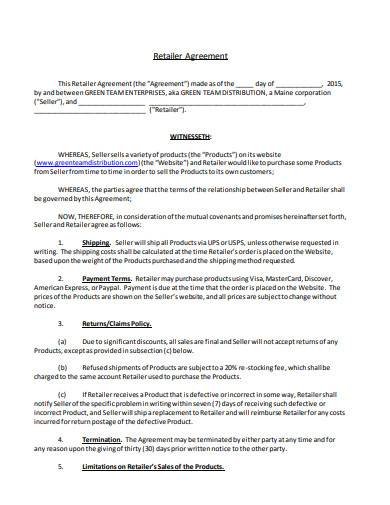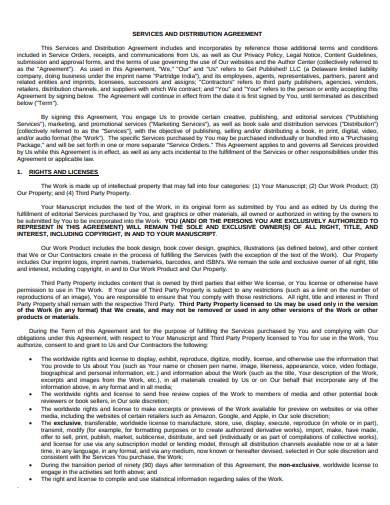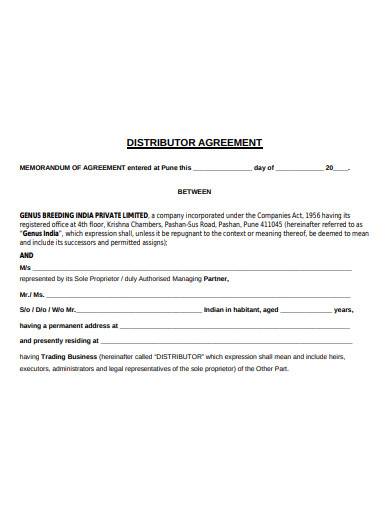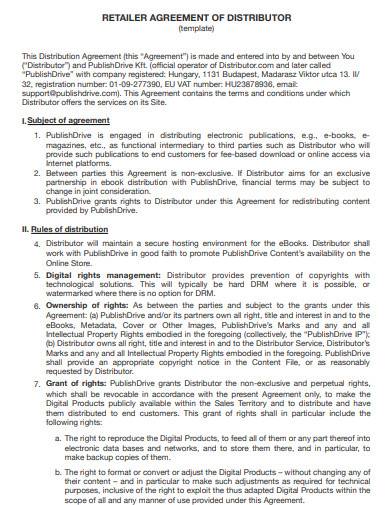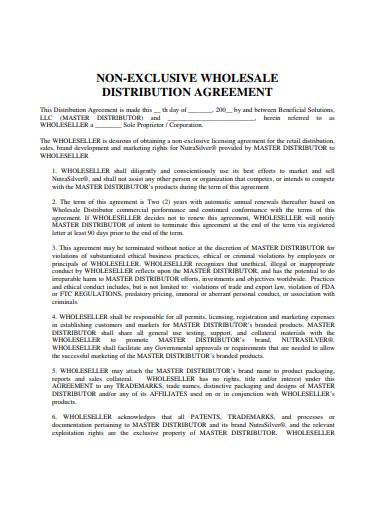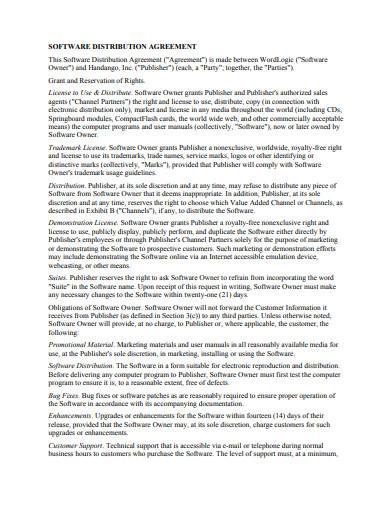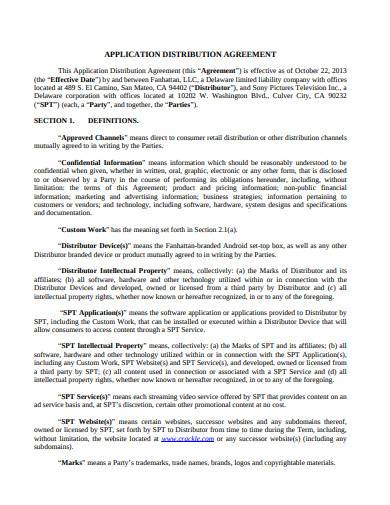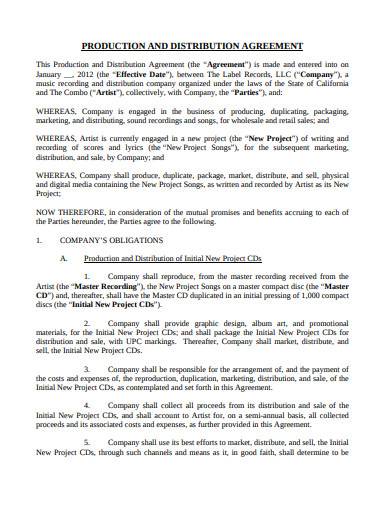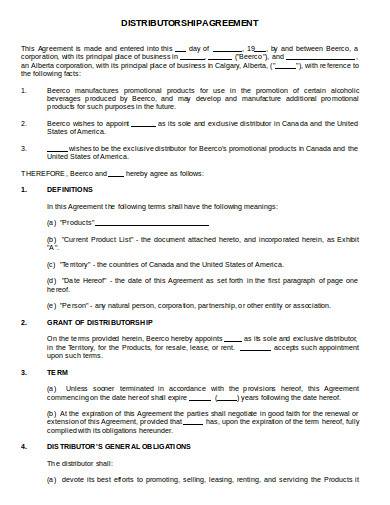To maximize the number of sales, many manufacturers use full distribution as their distribution channel. Through this channel, they can use market intermediaries, such as retailers. As a manufacturer, it is essential to maximize the number of market go-betweens to ensure that your products will reach the intended market, which is the end-user. To accomplish this task, you will need a retail distribution agreement, such as a consignment agreement, which, most likely, the reason you are reading this article. If you are looking for templates and sample agreements for your distribution strategy, you are in the right place! In this article, we have included a list of retail distribution agreements, which you can use as a reference in creating one. You may also view our articles about the consignment agreement template and sample reseller agreements for more samples.
What is a Retail Distribution Agreement
A retail distribution agreement is a type of agreement that the manufacturers and wholesalers use to give retailer businesses the right to resell the products that they manufacture, which is quite common to the businesses who are selling fast-moving consumer goods (FMCG). Retailers can easily sell these products due to their affordable prices. The increasing global population, knowledge, and income also play a significant role in increasing the sales of the FMCG market.
Along with the retail distribution agreement, manufacturers also include sales commission agreement as part of their distribution strategy, which drives the retailers to sell more goods.
Things to Include in a Retail Distribution Agreement
When obtaining a retail distribution agreement, there are components that you must include to consider it as valid for various purposes. These items may consist of terms and conditions of sale, right to market, the timeframe of the effectivity of the contract, brand licensing, places that the retailer can sell, performance agreement, reporting, termination contract.
8+ Retail Distribution Agreement Samples
In the previous sections, we have discussed the meaning of a retail distribution agreement and the contents that you will have to add in the contract. Now, choose among the samples and templates we have gathered below, which you think will suit your business needs.
1. Retailer Distribution Agreement Sample
2. Retail Services and Distribution Agreement Template
3. Retail Distributor Agreement Sample
4. Retailer Agreement of Distributor Sample
5. WholeSale Distribution Agreement Template
6. Software Distribution Agreement Sample
7. Application Retail Distribution Agreement Sample
8. Retail Production and Distribution Agreement Template
9. Retail Distributorship Agreement in DOC
Tips in Creating and Managing a Retail Distribution Agreement
Along with the beneficial results, creating a dealership agreement with the distributor companies has its associated risks. That is why we included the following best practices in developing and maintaining a retail distribution agreement.
1. Choose Distributors Carefully
Just like getting into a commercial lease agreement and other business agreements, you need to choose the right distributors that will actually help distribute your products to the customers effectively. You don’t want your product to just get stuck on the shelves of a retailer. Start by researching the retailer background and asking for a business plan. Your goal is to determine whether or not this retailer has a good marketing strategy that will allow your products to sell. By doing so, you will also prevent yourself from getting stuck to a contract that will give you more problems than advantages. For example, you signed a long term contract with a retailer with a poor marketing strategy, stating that it will exclusively sell your products. You don’t want that to happen, don’t you?
2. Be Specific with the Products that You Want a Retailer to Distribute
Microsoft is indeed very popular for its Windows OS, which powered most desktops and laptops. On the other hand, their OS product barely made it to the mobile phone industry, since Android and iOS are leading in this area. It is no different in the other area of the retail sector. A retailer can have an excellent performance in distributing a particular product but struggle in selling other products. Thus, for the sake of your business’ growth, determine which of your products will sell if you partner with a certain distributor.
3. Specify the Territorial Coverage
It is one of the essential parts of a retail distribution agreement that you need to take note of. For example, McDonald’s is a prevalent fast-food chain in the US. However, in some countries, such as Greece and Vietnam, the company struggles to make it to the top. Your products may not sell in some areas for various reasons, such as the market is saturated. Thus, you have to consider this factor when signing a contract with a retailer. Do your research to determine if there is a chance that your product will sell in a particular area.
4. Take Time to Write the Distributor’s Commitments
Your goal in signing an agreement with a distributor is to maximize your sales. However, if the distributor is consistently not hitting the target sales in contrast to what you have agreed, your cause will, most likely, not materialize. It is essential to include a clear scope of the distributor’s commitments to avoid this situation. For example, you can incorporate a termination agreement stating that if the store does not reach a certain number of sales for a specific period, you have the right to terminate the contract. To avoid getting into a contract with this type of retailer, you may also require your potential dealer to provide a business plan. It will also help if you will ask for the marketing strategy that the business employs.
Associating retailers is indeed an excellent way to maximize the number of sales in your business. However, as we have mentioned earlier, these agreements may also come with risks. With the information that we have discussed in this article, you now know how to deal with these situations. However, as a businessman, you should also know that not all products do well with associating several retailers. Thus, it also essential to determine which distribution channel will suit your products. To do it, read our article about the distribution channel.
Related Posts
FREE 10+ Trial Agreement Samples In MS Word | Google Docs | Apple Pages | PDF
FREE 9+ Shop Rental Agreement Samples [ Commercial, Lease, Tenancy ]
FREE 10+ Charter Agreement Samples In MS Word | Google Docs | Apple Pages | PDF
FREE 10+ Mentoring Agreement Samples In MS Word | Apple Pages | PDF
FREE 10+ Partner Agreement Samples In MS Word | Google Docs | Apple Pages | PDF
FREE 10+ Individual Agreement Samples In MS Word | Google Docs | Apple Pages | PDF
FREE 10+ Strategic Agreement Samples In MS Word | Google Docs | Apple Pages | PDF
FREE 10+ Equity Agreement Samples In MS Word | Google Docs | Apple Pages | PDF
FREE 10+ Producer Agreement Samples in MS Word | Apple Pages | PDF
FREE 10+ Grant Agreement Samples In MS Word | Apple Pages | PDF
FREE 8+ Meeting Agreement Samples in MS Word | Google Docs | Apple Pages | PDF
FREE 10+ Community Agreement Samples In MS Word | Google Docs | PDF
FREE 8+ Real Estate Option Agreement Samples in MS Word | PDF
FREE 10+ Call Option Agreement Samples In MS Word | PDF
FREE 10+ Advertising Agreement Samples In MS Word | Google Docs | Apple Pages | PDF

